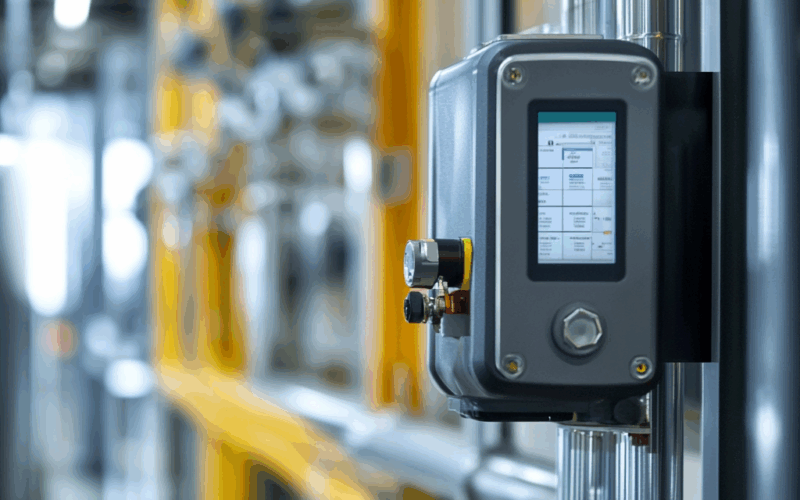The modern world is on the threshold of a new energy era, where every device, every system and every consumer becomes part of a more complex and intelligent energy network.Electronics are no longer just a means of control— it has become the heart of energy distribution, monitoring and optimization. Intelligent controllers, sensors, communication modules and data processing algorithms now form the basis of energy-efficient solutions not only in industrial complexes, but also in homes, offices and urban infrastructures.It is smart electronics that provide a balance between efficiency, sustainability and comfort., while simultaneously opening up new horizons for development.
Devices that control energy flows
Intelligent controllers represent the basis of a modern energy management system. These are small but powerful devices that can analyze electricity flows, turn equipment on and off, adjust operating parameters, and transmit data to cloud services or local interfaces. Their application covers all levels – from private housing to large industrial enterprises and power grids.
Such controllersnot only manage loads, but also interact with other system components, including temperature, light, motion sensors, as well as batteries and alternative energy sources. This allows for the implementation of intelligent consumption scenarios and adaptation to external conditions, making the systems truly “smart” and autonomous.
How do smart controllers work?
Smart control devices are based on a combination of hardware and software components. They perform a wide range of functions:
- Monitoring energy parameters— voltage, current, frequency, power.
- Load management— automatic switching on/off of equipment.
- Data collection and analysis– locally or sent to the server.
- Integration with IoT and cloud platforms— remote control via applications.
- Feedback and adaptation— responding to external events and adjusting algorithms.
Such controllers are not just passive observers,They actively shape the behavior of the entire system. They can reduce the load during peak hours, suspend unimportant processes if energy is expensive, or direct energy from solar panels to where it is most needed. All this in real time, without human intervention.
Benefits of implementing smart systems
The advent of smart electronics has revolutionized the way we manage energy.. First of all, this became noticeable in terms of increased efficiency and reduced costs. Due to precise control, it is possible to reduce excess energy consumption, avoid overloads and equipment breakdowns, and therefore reduce repair and maintenance costs.
Another important aspect is environmental friendliness.. Controllers allow for optimal energy use, especially in combination with renewable sources: solar panels, wind generators, recovery systems. All this helps reduce emissions and move towards a more sustainable energy model. In addition, process automation makes equipment operation more convenient and safe.
The Impact of Technology on Sustainable Development
Digitalization of energy is impossible without smart electronics. This applies not only to large enterprises, but also to small residential complexes, hotels, shops, and medical institutions.Controllers become the link between a person and the system, providing access to control via a smartphone, tablet or web interface.. This is not just convenient – it allows you to make informed decisions about resource consumption, reduce consumption without compromising comfort, and redistribute power depending on current needs.
Besides, integration with analytics and artificial intelligencetransforms these systems into learning systems. They remember user behavior, predict load peaks and adapt to them. This is especially important for complex facilities such as data centers, airports or logistics centers, where any deviation in the power supply can lead to serious consequences. Thus, electronics becomes the basis not just for savings, but for sustainable and safe development.
Prospects and challenges of digitalization of energy
Despite the obvious advantages, the widespread introduction of smart electronics faces a number of challenges.Firstly, this is the high cost of the equipment and the need for its qualified adjustment.. Not every organization is ready to invest in digital modernization without a clear understanding of the payback period. Secondly, it is important to consider security and stability issues:Smart device networks are vulnerable to cyber attacks and require robust data protection protocols.
Nevertheless, the prospects look promising. The introduction of 5G, the development of cloud platforms and artificial intelligence make smart controllers even more powerful and accessible. Gradually, even household devices – boilers, air conditioners, lighting – are becoming part of a large control network. The integration of electronics with smart city systems will open up new opportunities for residents of megacities, improve the quality of life and the efficiency of infrastructure. And it is now that standards, technologies and approaches are being formed that will determine what the energy of the future will be.
We are at the beginning of a major transformation whereElectronics cease to be ancillary and become the center of energy control. From everyday tasks to industrial automation, controllers, sensors, and platforms are being introduced everywhere, creating a new quality of life and work. This is not just technical progress – it is the foundationnew energy culture, where efficiency, sustainability, autonomy and a smart approach become the main focus.
Transition to digital system sIt takes time, resources and preparation, but it is already happening. Companies, cities and private users are gaining access to technologies that seemed like science fiction just yesterday. And it is electronics – with its precision, logic and ability to interact with other systems – that is becoming the link between man and his energy future.
Smart controllers not only save resources, but also allow for the construction of complex, adaptive systems that operate autonomously and learn together with the user. Thisthe path to full integration of energy, data and convenience, where every step becomes part of a bigger picture of sustainable development. The future belongs to smart technologies, and whoever masters them today will have the key to managing tomorrow.
They provide automation of processes, precise control of resource consumption and allow the integration of renewable sources, making the energy system more flexible and economical.
There may be challenges with initial costs, the need for setup, as well as risks associated with information security and dependence on the stability of the digital infrastructure.

